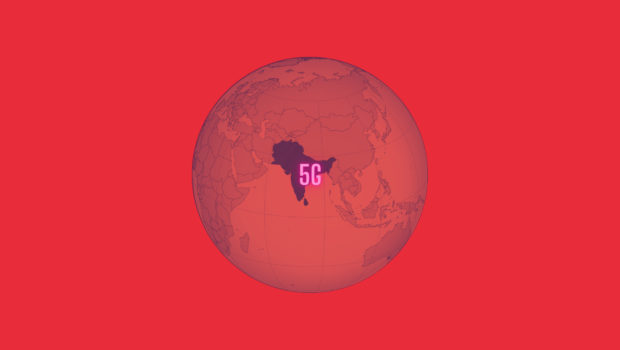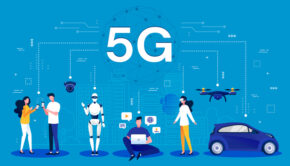Will 5G change anything regarding poor connectivity quality in south Asia?
we set the fourth generation of internet connectivity standard in the year 1988 with few requirements that a standard must meet in order to be certified as 4G. While we have seen it rolling out after 2011, 4G wasn’t in its proper form. While the present connection in that time was closer than real 4G standard, but did not meet the requirement set by IMT-A. It is after 2012/13 we have seen real 4G and much later in South Asian countries.
Problems that we couldn’t get rid of
No matter how technologically advanced we get, South Asians are the latest to get any. When 4G first rolled out worldwide, it took 8 more years for Bangladesh to welcome its first 4G internet. Many South Asian countries brought 4G before Bangladesh, and some made widespread 4G connections available for the most users. But there is something, some problems operators and ISPs still couldn’t get rid of.
First, the average internet speed of South Asia is 2.6 Mbps according to Fast metric. There may be a few faults here because they calculate it in weird ways, but I think the reality is very close to this. Either way, it isn’t fast at all. Myanmar and India have the fastest internet connection, and war torn Afghanistan has the slowest (not surprising, and you know what are the reasons). Here is a map which you can interact with.
No matter what, most South Asian countries are failing to provide consistent speed, good coverage, widespread connectivity and quality internet to all users. This is because of many factors, but we can solve easily those if every party involved works together. But the users are still suffering.
Some gets, some none
Users on the urban side of countries get faster than average internet while the rural side lacks good internet connection. Majority of rural areas internet consumption actually happens over mobile data. Unfortunately, even after all these generations, many users still get either network connection via mobile or modem, or crappy broadband connections which usually cost more than conventional city side broadband internet.
Most of the rural side users pay more for inferior quality internet connection. Mobile data is limited, pricey, and some operators are scummy, making connection slower on purpose after using a certain amount of bandwidth. In Bangladesh, data allowance costs twice as what major Indian operators provide for the same price. And wired internet costs are similar, when it should be cheaper. Many think that, since wired broadband gives unlimited data with no cap, it is justified, but the speed limitation makes it unusable for serious work. Basically, you will pay for YouTube streaming (which they provide at high speed).

Some rural areas do not have any broadband connection till the date. Some areas have basic features that are required for wired internet and fibers. Despite that, some users in those areas are still living without one. In certain areas of Bangladesh, a basic 1Mbps broadband connection costs twice as standard 20Mbps urban area connections. Judging current situation and the rate of growth, it will take 5 more years to get any good connection in these places. Or maybe Elon Musk can provide some solutions after feeding up with Dogecoin meanwhile.
Why operators are failing constantly
The average internet speed of South Asian countries does not meet 4G standards, not even close. Operators are constantly failing to meet at least close to real requirements for high-speed internet. But they are meanwhile advertising the opposite. Some operators claim they are providing high-speed internet, while purposefully slowing down connections, failing to provide stable internet in rural areas.
Currently, over 64% of Indian population lives in rural areas, which is more than half. These problems are because of many factors which I want to talk about. As I have told before, they can solve these, but I don’t know why nobody including governments do not care about it.
Poverty
Unfortunately, many rural and urban populations still live near the poverty line. Good thing is, many South Asian countries are developing faster than ever. But currently, it is one of the major reasons people are not getting quality internet. While internet users are increasing each day, there are still people that cannot afford a fiber connection.
Governments aren’t actively trying
Most governments want full control of what operators are doing and are busy taking frequency rents, licensing fees and making ways to make those things easier. While it also includes other factors, governments are not willing to make the internet better a priority. Welcoming newer technology, giving space for innovation and investing in technologies that can make connectivity better should have been easier in South Asian countries, but it isn’t. For this, telecom operators could not meet the demands of the vast consumer base that is growing every day.
Poor network infrastructure

Limited submarine cable, using foreign satellites for connectivity and older technologies to provide internet connection. All these together make inferior quality internet nationwide. Forget rural, many urban side users do not have access to fiber based connections. Low investments from the operator because of government issues, causes less cell coverage and thus slower internet.
Will 5G change anything?
Many South Asian telecom operators have promised to work on bringing 5G fast. India can be one of the first to adopt 5G. But many other countries in South Asia are still trying to set up regulation and licensing rules for operators. The target should have been to bring this new technology faster and to more users as quickly as possible. But there are fears it won’t happen. Many South Asian countries are yet to meet 4G standards regarding speed. Consistent quality connection is lacking still. There is a common pattern that may repeat this time too many are fearing.
5G may come, operators will advertise, prompting users to replace their existing SIM to 5G supported ones. Then continue providing 4G speeds, but now with a 5G logo on top. Constant advertising and new hope, then someone will publish news about how most of the countries do not meet the requirement for 5G standard. There are things that need to be solved to make 5G real in South Asia. First, governments should actively try to bring this technology faster. With flexible regulation and licensing, they have to provide operators scope to work for setting up 5G quicker. We have yet to see.
Another major issue with 5G being widely used is 5G enabled devices. Since this part of Asia mostly prefers budget devices because of poverty and low income, there are little to no smartphones that are capable of 5G connection. There is hope, though, that many budget phones are coming with 5G integrated and will launch soon in India and neighboring countries. But how many of those will be cheap enough?
5G challenges
Is south Asia ready for 5G challenges? India wants to adopt mmWave, which might deliver 150 billion dollars to its GDP. So what is mmWave? It is a high frequency band that will solve some big issues with LTE bands. 5G mmWave works well in dense areas with a high number of connections in a single place. It can work in crowds, concerts, stadiums and places where lots of devices are sending and receiving signals at the same time and place.
One challenge is, as written in this paper by Federico Agnoletto, Senior Economist of GSMA :
“The Indian market faces key challenges that are hindering operators’ capacity to invest in new technologies. While smartphone adoption has soared in the past three years and India is forecast to become the second largest smartphone market in the world by 2025, the market has some of the lowest ARPU levels globally and operators some of the highest levels of debt.”
The next challenge is setting up network infrastructures. mmWave and other 5G bands require more cell towers because of limitations in mmWave. High frequency waves travel shorter and cannot penetrate hard objects and walls. Since buildings are everywhere, this will create blockage. And to combat this issue, smaller towers should be installed around blocks to ensure minimal blockage. This increases costs, as more machines and infrastructure are needed to be placed and maintained.
For good 5G coverage requires multiple bands on three levels of frequency. Bands up to 160MHz is good enough for not so densely connected cells and can achieve high speed. Mid band 5G, 3700 – 4000MHz is good for general widespread connectivity. And then the mmWave works great in places that have network congestion issues. mmWave can work in heavily dense places with lots of users connecting to 5G.
So what will happen after we successfully do it
It may take more time than usual, especially for most south Asian countries to adopt 5G. Some countries may only adopt mid-band frequency. It may take up to 2028 to get 5G for most south Asian users. Some countries may not adopt mmWave. While Indian smartphone manufacturers may distribute budget phones with 5G, other countries may have to keep 5G only for those who can pay for luxury. Also, will 5G feature phones be available just like 4G KaiOS phones?
But if we can successfully implement 5G to whole south Asia, we will start getting all the benefits 5G promised to offer and there is a great chance that the economy will grow significantly. I already linked an interesting paper by Federico which you should definitely read. From improved telemedicine and robotic surgery, to filming via drone in highest definition, all will be possible with 5G. South Asia can march toward an advanced era where the future of telecommunication will begin.
So in conclusion, we have to wait, maybe longer. Governments should have jumped into this and actively try to invest and create space for innovators to plan and create paths for quicker 5G implementation. We have to pass all the challenges 5G comes with. If we can succeed, things will only get better. Thank you for reading and have a great day.















